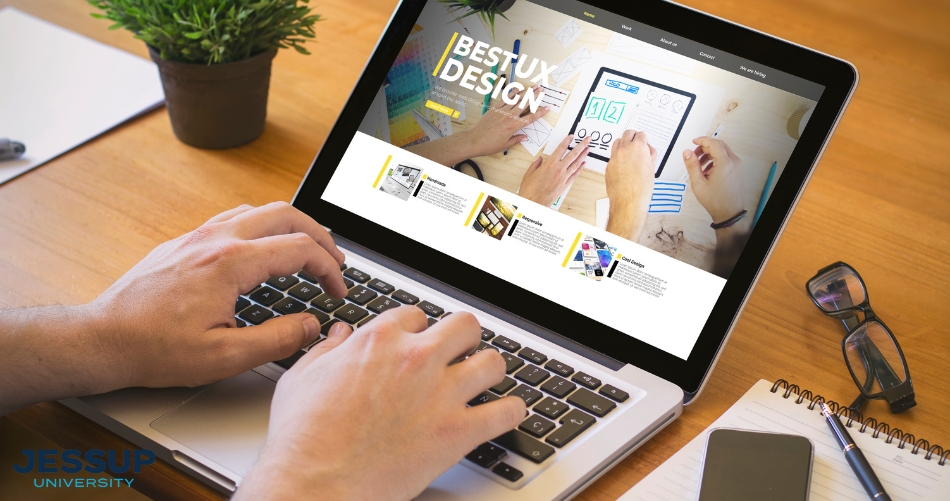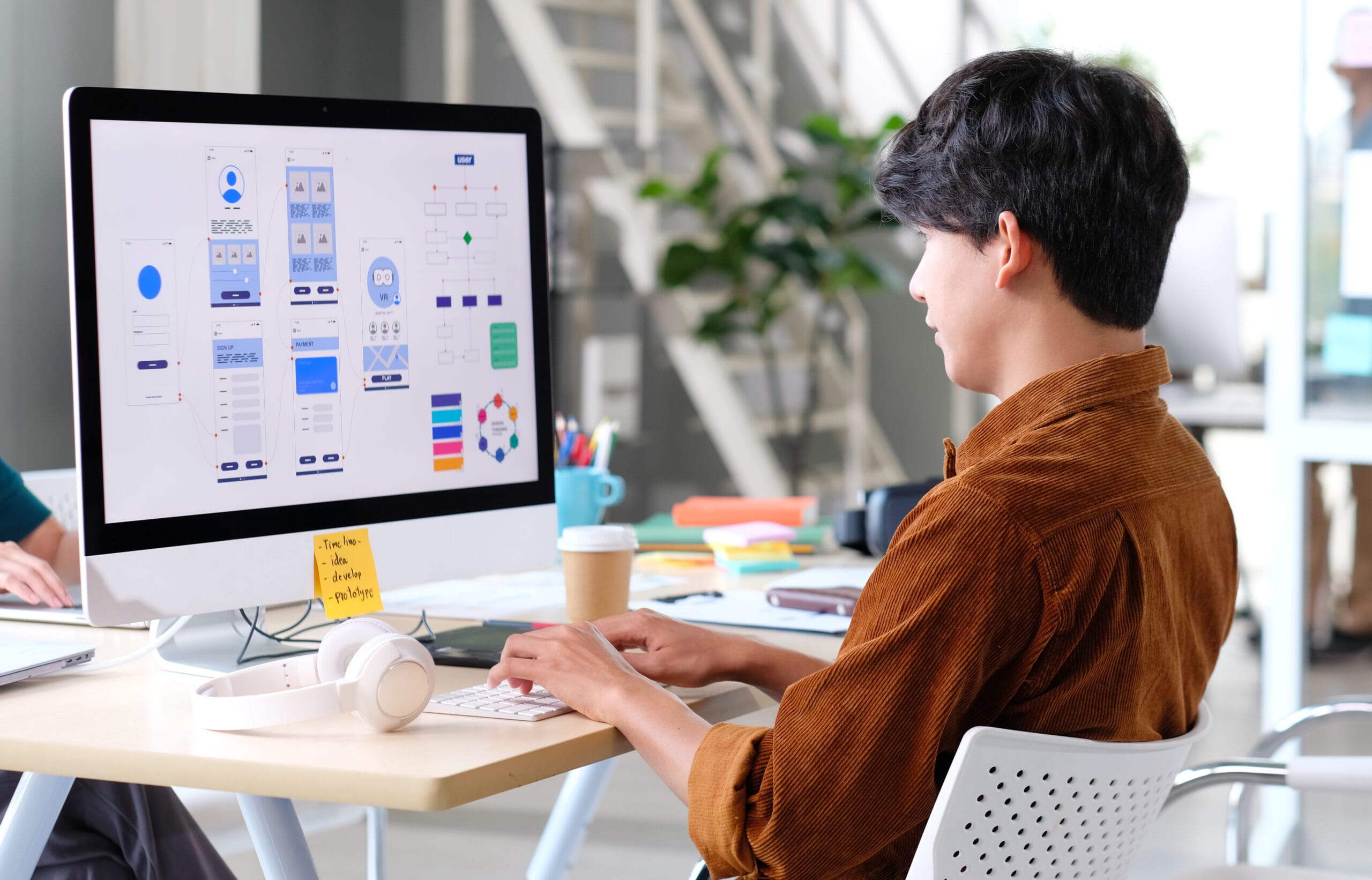Top 7 signs it’s time to partner with a Website Design Agency
Wiki Article
Exploring Imaginative Patterns in Web Design for Modern Services
The landscape of web design is continually developing, mirroring the vibrant demands of modern-day services. Current patterns highlight a choice for minimalism, vibrant typography, and appealing interactivity. Companies increasingly focus on user experience through mobile-first principles and tailored web content. Furthermore, a concentrate on sustainability is gaining grip. Understanding these fads is vital for services aiming to stand out in a crowded market. What ramifications do these shifts hold for the future of digital engagement?Embracing Strong Typography
Bold typography has emerged as a defining aspect in modern web design, recording focus and conveying messages with striking clearness. This pattern focuses on visually impactful message that improves user interaction and brand identity. Designers frequently utilize extra-large typefaces and distinct fonts to create a hierarchy, assisting audiences via web content flawlessly.
The tactical use vibrant typography permits for reliable storytelling, enabling brand names to interact their worths succinctly. It serves not just visual objectives however also practical ones, as it boosts readability throughout tools and screen dimensions.
As internet sites compete for user attention, bold typography attracts attention in a saturated digital landscape. Its versatility enables developers to trying out contrasting designs and shades, even more intensifying its performance. Ultimately, welcoming vibrant typography represents a shift in the direction of more communicative and meaningful web design, fostering a deeper connection in between brands and their audiences.
The Rise of Minimalist Style
As digital atmospheres end up being significantly chaotic, the rise of minimal style uses an invigorating alternative that focuses on simplicity and performance. This design philosophy strips away unnecessary elements, permitting material to take spotlight. By focusing on clean lines, sufficient white space, and a minimal color palette, minimal layout improves user experience and enhances navigating.Services embracing this trend goal to convey their brand name message plainly and successfully, promoting a sense of calmness and quality. The absence of distractions assists individuals focus on vital info, bring about improved involvement and conversion rates. In addition, minimal design straightens well with mobile-first methods, guaranteeing that web sites remain easy to use and available throughout different gadgets.
Inevitably, the rise of minimal layout reflects a more comprehensive change in the direction of focusing on user demands and choices, making it an effective tool for modern companies seeking to make an enduring effect in the electronic landscape.
Immersive Animations and Interactivity
While many internet developers welcome minimalist appearances, one more compelling trend gaining grip is the usage of immersive computer animations and interactivity. This strategy improves user engagement by developing intriguing experiences that draw visitors into the material. Developers employ vibrant aspects such as animated histories, scrolling effects, and interactive infographics to interact complex concepts in an available manner.These animations not only provide aesthetic rate of interest however also guide customers with the navigating process, making interactions extra instinctive. Float effects and computer animated changes can motivate individuals to check out further, leading to increased time spent on the site.
Additionally, this pattern lines up with the wider activity towards storytelling in web design, where animations act as narrative devices that convey brand messages efficiently. By integrating immersive computer animations and interactivity, companies can differentiate themselves in a crowded online landscape, inevitably boosting user fulfillment and brand name commitment.
Mobile-First Layout Concepts
Mobile-first layout principles highlight focusing on user experience by guaranteeing web sites work flawlessly on smaller sized displays. This technique includes responsive design techniques that adapt to numerous gadget sizes while maintaining visual stability. Additionally, it concentrates on touchscreen navigation layout, boosting functionality for mobile customers.Focusing On User Experience
How can designers successfully focus on user experience in an increasingly mobile-centric world? Emphasizing mobile-first style concepts is important, as individuals largely involve with websites through mobile phones. This approach encourages developers to simplify content, ensuring it is navigable and quickly obtainable on smaller sized screens. Secret methods include streamlining navigating, minimizing load times, and utilizing touch-friendly elements that improve interactivity. Furthermore, prioritizing legible typography and instinctive formats can significantly boost user complete satisfaction. Designers need to constantly collect user comments to improve their methods, adjusting to progressing user needs and preferences. By concentrating on these elements, companies can create an interesting electronic experience that cultivates commitment and drives conversions, eventually aligning with the expectations these days's mobile customers.Receptive Format Methods
Designers accept receptive layout methods to produce flexible and adaptable internet experiences that cater to different screen dimensions. This approach focuses on mobile-first style concepts, guaranteeing peak functionality on Clicking Here smaller sized gadgets prior find more information to scaling up for larger screens. By making use of liquid grids, adaptable photos, and media questions, designers can keep a cohesive visual identity throughout all systems. This approach not only enhances user engagement but likewise boosts search engine positions, as mobile-friendly sites are preferred by search formulas. Furthermore, receptive designs enable businesses to reach a wider target market, accommodating users on smartphones, desktop computers, and tablets alike. In general, executing these techniques is necessary for modern-day web design, ensuring that companies remain competitive in an ever-evolving electronic landscape.Touchscreen Navigation Design
With the increase of mobile phones, touchscreen navigation has become a basic element of web design. Developers are increasingly adopting mobile-first concepts to improve user experience and engagement. Web Design Agency. Reliable touchscreen navigation focuses on larger switches and user-friendly motions, permitting users to communicate easily with web content. This technique reduces aggravation and urges exploration, as users can navigate effortlessly with their fingers. In addition, incorporating swipe gestures and faucet capability deals with the all-natural habits of mobile customers. Responses systems, such as aesthetic cues and animations, boost use even more by confirming actions. As touchscreens dominate user interactions, using these style elements not only lines up with contemporary assumptions but also promotes a more accessible and enjoyable surfing experience for all customersIndividualized User Experiences
What makes a customer feel truly involved on a website? The response commonly exists in individualized user experiences. By customizing material and navigation to individual choices, businesses can develop a purposeful link with their audience. This customization can be accomplished with various approaches, such as evaluating user habits, using cookies, and using personalized suggestions based on previous interactions.Ecommerce systems that recommend items based on searching history not just enhance user experience but also boost conversion prices. Incorporating vibrant content that adjusts to the user's area or time of day can further enrich involvement.
In addition, individualized introductions or messages can make individuals feel valued and understood. As modern services strive to stand apart in a competitive electronic landscape, accepting tailored user experiences becomes necessary, fostering loyalty and motivating repeat brows through. Ultimately, this method changes a conventional site right into an interactive system that resonates with its audience.
Sustainability in Web Design
As the electronic landscape remains to progress, the importance of sustainability in Learn More web design has actually gained significant focus. Designers are progressively familiar with the ecological impact their creations can have, prompting a change towards green techniques (Website Design Agency). Sustainable web design focuses on optimizing internet sites to decrease energy usage and carbon footprints. Approaches consist of making use of minimalistic design principles, maximizing photos, and using reliable coding methods to enhance loading ratesThe selection of organizing carriers plays an important duty; several developers are now opting for green holding services powered by eco-friendly energy. By focusing on ease of access and easy to use navigation, lasting designs also satisfy a wider target market, improving usability. This conscious technique not just interest environmentally-minded consumers however also adds to the general longevity and efficiency of internet sites. Ultimately, sustainability in web design shows a growing pattern in the direction of accountable electronic techniques that align with modern business values.

Frequently Asked Concerns
Exactly How Can I Select the Right Shade Scheme for My Internet site?
To choose the best color system for an internet site, one should think about the brand's identification, target audience, and emotional influence. Making use of shade theory and screening mixes can boost user experience and aesthetic allure substantially.What Are the very best Tools for Prototyping Internet Layouts?
The best tools for prototyping website design consist of Figma, Sketch, Adobe XD, and InVision. These systems offer intuitive user interfaces, collaboration attributes, and substantial libraries, making them ideal for designers to develop and refine their principles successfully.Exactly how Do I Measure the Performance of My Web Design?
To measure web design effectiveness, one should evaluate user involvement metrics, conversion rates, and usability feedback (Web Design services). A/B screening and heatmaps can also provide understandings into user behavior, directing essential adjustments for enhanced performance and user experienceWhat Are Typical Web Design Errors to Prevent?
Typical web design mistakes consist of messy designs, bad navigating, slow loading times, lack of mobile optimization, inadequate comparison, and neglecting user responses. Staying clear of these challenges enhances user experience and increases overall efficiency of the web site.Exactly how Commonly Should I Update My Internet Site Layout?
A site design ought to be updated every 2 to 3 years, or faster if considerable adjustments in branding or modern technology take place. Normal updates maintain the website fresh, functional, and aligned with existing user assumptions.
Report this wiki page